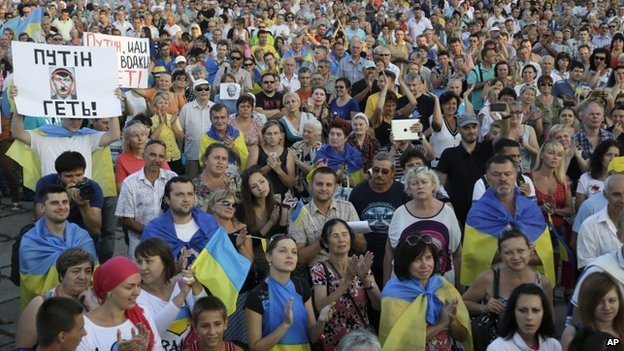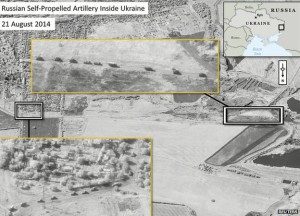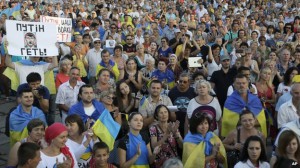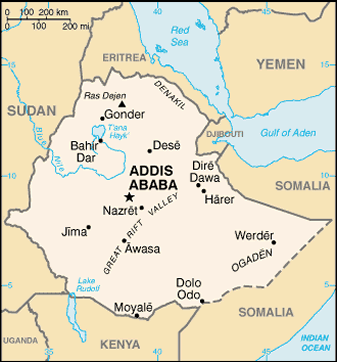Thursday, August 28,2014, saw a significant escalation of the crisis in Ukraine as large numbers of Russian troops entered the country on the southeastern front, near the city of Mariupol. NATO released several satellite images that support accusations of Russian military involvement in combat in Ukraine. The Alliance said that more than 1,000 Russian soldiers joined the separatists in eastern Ukraine. The past two weeks witnessed a significant escalation in the level of Russian military interference in Ukraine, according to Brigadier General Nico Tak, a senior officer in NATO’s military command. An image dated August 21, 2014, shows a Russian military convoy with self-propelled artillery moving in the Eastern Ukrainian region of Krasnodon. Another image, dated August 23, 2014, shows the same units in firing positions.
According to Ukrainian President Petro Poroshenko, “columns of heavy artillery, huge loads of arms and regular Russian servicemen came to the territory of Ukraine from Russia through the uncontrolled border area.” Mr. Poroshenko cancelled a scheduled visit to Turkey on Thursday and called an emergency meeting of the Ukrainian National Security and Defense Council in response to the recent events. The President dismissed the Kremlin’s claims that the soldiers had volunteered to fight against the Ukrainian army, sacrificing their vacations to assist the rebels.
The international community has long suspected Russian involvement in Eastern Ukraine. On August 27, 2014, the International Institute for Strategic Studies (IISS) in London identified a Russian T-72 tank in a separatist column in Sverdlovsk, Luhansk region. According to experts at the IISS, the tank originated in Russia as the Ukrainian army does not possess such heavy military equipment.
Following the release of NATO images, US President Barack Obama held a press conference in Washington to address growing concern over the crises in Ukraine and Iraq, stating that the Kremlin’s actions are leaving it even further isolated from the rest of the global community. “We agree — if there was ever any doubt — that Russia is responsible for the violence in eastern Ukraine,” said the President. “The violence is encouraged by Russia. The separatists are trained by Russia, they are armed by Russia, and they are funded by Russia. Russia has repeatedly violated the sovereignty and territory of Ukraine,” he added. Although the White House condemns Russia’s actions, at present it will not consider military action to solve the situation, but urges the international community to mobilize pressure on Russia to encourage it to withdraw troops and stop its aggression toward Ukraine. Canada’s Foreign Affairs Minister John Baird called the activity of Russia and Russian-sponsored units in eastern Ukraine “unacceptable, irresponsible and absolutely reckless.”
In response to the escalation, the Ukrainian National Security and Defense Council re-imposed conscription and will now seek NATO membership. Prime Minister Arseny Yatsenyuk said he will ask Parliament to put the country on the path toward NATO by cancelling Ukraine’s non-bloc status.
The UN Security Council met in an emergency session to discuss the situation, while the US National Security Council gathered at the White House, and NATO and EU leadership convened to consider their response to the crisis on Friday. German Chancellor Angela Merkel said that the EU would discuss imposing additional sanctions on Russia at a summit to be held over the weekend. Despite a more aggressive approach from the Kremlin, the international community seems to be unwilling to take any other measures for now.





